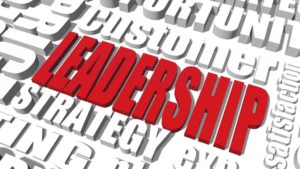Article published on the Philadelphia Business Journal on March 7, 2022.
As a columnist on leadership for the Philadelphia Business Journal and 43 sister publications across the U.S., I am frequently asked about the traits of effective leaders. In March 2021, I wrote an article on this subject. This is an update of that article.
So, what are these traits? An effective leader…
Sets the right tone at the top and nurtures the right culture within their organization
Tone at the top and organizational culture are mission-critical to the success of all businesses. Tone at the top reflects the ethical compass of the company. Culture is the environment in which employees are treated and interact with each other, as well as how they interact with customers and clients.
Volkswagen suffered significant legal, financial and reputational damage when they were caught falsifying emission test results for their diesel cars in 2014. Volkswagen CEO Oliver Schmidt’s tone at the top and the culture he nurtured led to this criminal activity.
Doesn’t tolerate toxic leaders within their organization
An organization needs effective leaders at every level to achieve its goals. Some individuals in leadership roles are toxic. They micro-manage, blame others for their mistakes or sap the creativity, initiative and vitality from the workplace. Some don’t respect their employees and treat them poorly.
In a recent Inc. article, writer Bill Murphy Jr. quotes Warren Buffett in Berkshire Hathaway’s shareholder letter: “We employ decent and talented people.” This is a simple value that all leaders should embrace.
Practices effective communication
Effective leaders communicate the mission and vision of the company and the roles that various groups of employees play in achieving them. Effective leaders are good listeners and encourage direct reports to share what they think, not what their leaders want to hear.
Effective leaders provide forums for employees to express their views, such as town meetings with groups of employees to talk about the status of the business and respond to questions.
Creates an environment in which employees have fun exceeding their financial goals
As I rose up through my company, it was challenging to meet the stretch financial goals set by the CEO each year. We often fell short of these goals and needed to cut expenses, which adversely impacted morale and growth initiatives.
When I became the CEO, we changed our approach to financial goal setting. We set realistic goals with the objective of blowing through them by the greatest extent possible. We also increased bonus payments for significantly exceeding those goals. Employee morale immediately improved.
During my five-year tenure as CEO, we moved from fourth quartile financial performance to first quartile performance measured against 17 public peer companies within our industry.

Listens when their direct reports challenge paradigms
Paradigms are established ways of doing things. When a new approach is suggested, the wrong response is, “We have always done it that way.” Former Australian Executive Woman of the Year Catherine DeVrye has called these “the seven most expensive words in business.”
Challenging paradigms and thinking “out of the box” are crucial for achieving breakthrough results and building competitive advantage. Employees who challenge paradigms are your change agents. Listen to them.
Doesn’t hold business unit leaders accountable for what they don’t control
At companies in multiple lines of businesses, business unit leaders are responsible for achieving P&L goals. Changes in corporate staff unit expenses are not in the control of business unit leaders and therefore, these changes should have no impact on their P&Ls.
Changes in staff unit expenses should be reflected on the corporate P&L, not the business units P&Ls. Hold staff unit charges to business units constant over three years and then readjust them.
Encourages employees to develop a feeling of ownership for their area of responsibility
This was a lesson taught to me when I was president of my company’s Canadian subsidiary. We empowered the operator of one of the production units at our Toronto plant – an hourly employee – to develop the scope of a capacity expansion, a job certainly outside of his normal job responsibilities. After he successfully completed the assignment, he developed a sense of ownership in the unit and how well it performed.
Developing a feeling of ownership by our employees in what they do was the foundation of our philosophy of continuous improvement that lowered costs and improved our competitiveness.
Recognizes the brutal facts of reality
This is one of the worst things a leader can fail to do. You would think that the lesson of facing the brutal facts of reality would not need to be relearned over and over again. Examples include the Chernobyl nuclear power plant catastrophe and the Challenger Space Shuttle disaster.
In both cases, leaders ignored the brutal facts of reality and failed to listen to those who warned about impending doom.
Develop these leadership traits. They will help you and your organization succeed.
Stan Silverman is founder and CEO of Silverman Leadership and author of “Be Different! The Key to Business and Career Success.” He is also a speaker, advisor and widely read nationally syndicated columnist on leadership, entrepreneurship and corporate governance. He can be reached at Stan@SilvermanLeadership.com.

